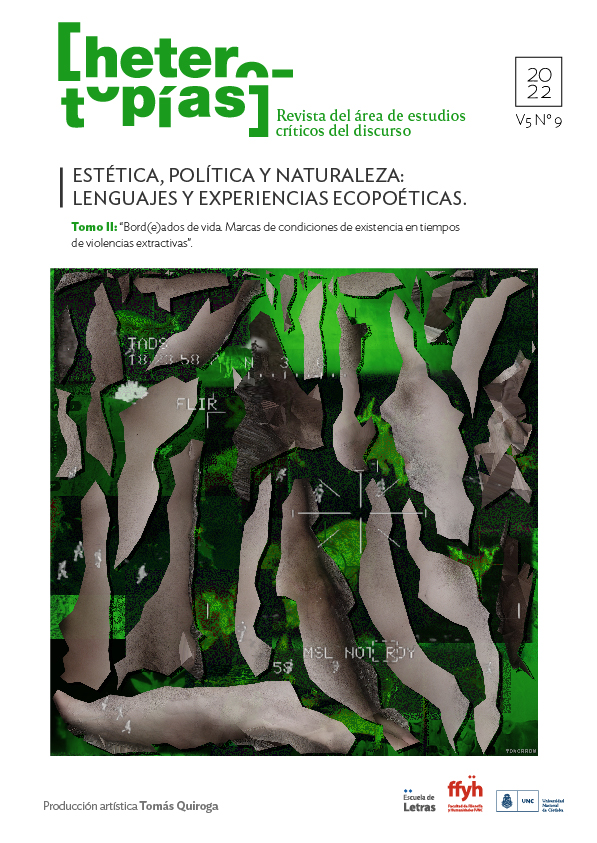Dance and metamorphosis: The choreographic politics of equality
Main Article Content
Abstract
The idea of metamorphosis has been present in many writings about dance, since Antiquity, and has been continued in various philosophical and aesthetic reflections. It relates to the conception and experience of a body that has no precise limits and experiences a synchronic identification with the world. Based on the critical analysis of philosophical concepts and choreographic works, this article argues that the relationship between dance and politics refers to the construction of choreographic politics of equality that theorize and experiment with new forms of common life. The protean body of dance exercises a practice capable of redefining that which today designates our conception of nature.
Downloads
Article Details

This work is licensed under a Creative Commons Attribution-NonCommercial-ShareAlike 4.0 International License.
Those authors who have publications with this journal, accept the following terms: Those authors who have publications with this journal, accept the following terms:
a. The authors will keep their copyright and guarantee to the journal the right of first publication of their work, which will be simultaneously subject to the Creative Commons Attribution - Non-Commercial - Share Alike (by-nc-sa) Attribution License; no commercial use of the original work or any derivative works is allowed, the distribution of which must be done with a license equal to the one that regulates the original work.
b. Authors may adopt other non-exclusive license agreements for the distribution of the published version of the work (e.g., deposit it in an institutional telematic archive or publish it in a monographic volume) provided that the initial publication in this journal is indicated.
c. Authors are allowed and recommended to disseminate their work through the Internet (e.g. in institutional telematic archives or on their website) before and during the submission process, which may lead to interesting exchanges and increase the number of citations of the published work. (See The effect of open access).
How to Cite
References
Agamben, G. (2011). ¿Qué es un dispositivo? Sociológica, 73, 249-264.
Debord, G. (1992 [1967]). La société du spectacle. Paris: Gallimard.
Diderot, D. (1751). Lettre sur les sourds et muets: à l’usage de ceux qui entendent & qui parlent. s. l.
Elias, N. (2008). La société de cour. Paris: Flammarion.
Foucault, M. (1975). Surveiller et Punir. Paris: Gallimard.
Frantz, P. (1998). L’esthétique du tableau dans le théâtre du XVIIIe siècle. Paris: PUF.
Le Roy, X., Cramer, F. A., Y Manchev, B. (2009). La danse, la métamorphose du corps. Rue Descartes, (64), 96–103. Recuperado de http://www.jstor.org/stable/40980713
Lepecki, A. (2012). Nove variações sobre coisas e performance. Revue Urdimento, 19, 93-99.
Lucien de Samosate. (1583). Les oeuvres de Lucian de Samosate. Paris: A. L’Angelier.
Ménestrier, C.-F. (1682). Des ballets anciens et modernes selon les règles du théâtre. Paris: Chez René Guignard.
Mondolfo, R. (2007). Heráclito. Textos y Problemas de su interpretación. Buenos Aires: Siglo XXI.
Muñoz, J. E. (2011). Introducción a la teoría de la desidentificación. En Taylor, D. y Fuentes, M. (Eds.) Estudios avanzados de performance (pp. 549-603). México: FCE.
Noverre, J.-G. (1760). Lettres sur la danse, et sur les ballets. Lyon: Chez Aimé Delaroche.
Perniola, M. (2004). The Sex Appeal of the Inorganic. London-New York: Bloomsbury.
Pure, M. de. (1668). Idée des spectacles anciennes et nouveaux. Paris: Michel Brunet.
Rancière, J. (1996). El desacuerdo: Política y filosofía. Buenos Aires: Nueva Visión.
Siegmund, G. (2003). El problema de la identidad en la danza contemporánea: del arte de la imitación al arte de la acción. En Conde-Salazar, J. y Sánchez, J. A. (Coord.) Cuerpos sobre blanco (pp. 51-62). Ciudad Real: Ediciones de la Universidad de Castilla-La Mancha.
Spanberg, M. (2017). Post-dance, An Advocacy. En Andersson, D.; Edvarsdsen, M. y Spanberg, M., Post-Dance. Estocolmo: MDT.
Vallejos, J. I. (2015). La técnica de las pasiones del ballet-pantomima: construcción de saberes sobre la danza durante los siglos XVII y XVIII. Cuadernos Dieciochistas, (15), 297–320. Recuperado de https://doi.org/10.14201/cuadieci201415297320
Vallejos, J. I. (2019). El cuerpo proteico de la danza y su con-fusión con la naturaleza. Alegoría y representación en el ballet cortesano durante los siglos XVI y XVII. Eadem Utraque Europa, 20, 257-284.
Vallejos, J. I. (2019a). La ética proteica de la danza y su liminalidad. Ponencia presentada en las I Jornadas de Arte y Liminalidad. Poéticas y Políticas en Movimiento en el Instituto de Artes del Espectáculo, de la Facultad de Filosofía y Letras de la Universidad de Buenos Aires. Recuperado de http://eventosacademicos.filo.uba.ar/index.php/JAL/JAL/paper/viewFile/4960/3012
